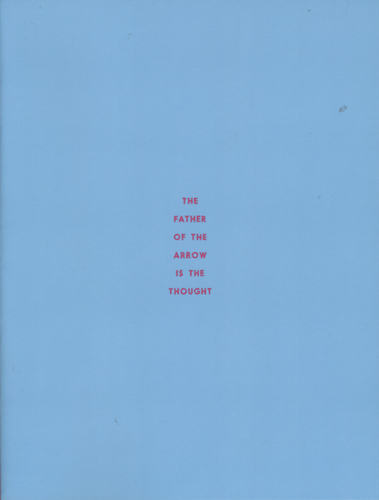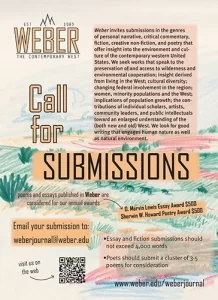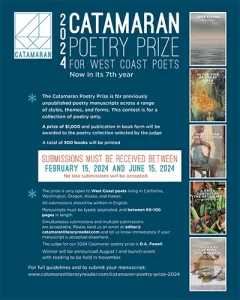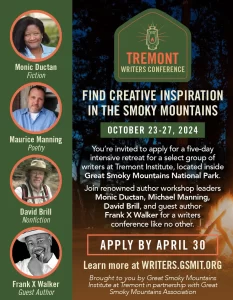The Father of the Arrow is the Thought
Don’t be confused by the title of Christopher Deweese’s The Father of the Arrow is the Thought—taken from a line by Paul Klee, it suggests poems that might be characterized by a singular trajectory, a martial swiftness that lands us with a wobbling after-strike in our target. And a cursory glance at the poems pretty much supports this—all of them take the form of relatively skinny columns that shoot with a severe straightness down the page. Indeed, we are going somewhere, and pretty fast. But a look at the rest of that Paul Klee quote gives us something which complicates this sense of motion: “How do I expand my reach? Over this river? This lake? That mountain?” Don’t be confused by the title of Christopher Deweese’s The Father of the Arrow is the Thought—taken from a line by Paul Klee, it suggests poems that might be characterized by a singular trajectory, a martial swiftness that lands us with a wobbling after-strike in our target. And a cursory glance at the poems pretty much supports this—all of them take the form of relatively skinny columns that shoot with a severe straightness down the page. Indeed, we are going somewhere, and pretty fast. But a look at the rest of that Paul Klee quote gives us something which complicates this sense of motion: “How do I expand my reach? Over this river? This lake? That mountain?”
This arrowing is also a kind of flight—an expansiveness over landscape—and if we consider the paintings of Klee himself, that landscape has a certain luminous flatness to it. So here we have a more complex sense of how these poems will proceed: with a balanced kind of motion, a drilling intermixed with a surveying, a discursiveness intermixed with raw vision. What better way to begin such a collection than with a hot air balloon ride:
Inside the gondola,
sound became a gesture.
A lion on the wind,
and then its skeleton
chopped within the gusts.
The light bent swans
between the clouds,
nasty, angry swans
we could almost feel
fucking up our ethos.
It reminded me of
when we stole the chicken,
how it kept so quiet
we dropped the knife
and just stood there,
“The Atmosphere” takes us up, no doubt, and the poems that follow are titled likewise by locators: “The Field,” “The Stream,” “The Pasture,” “The Narrows,” “The Promontory,” and so on. As such, Deweese offers a bevy of sharply drawn landscapes, such as this, from “The Orchard”:
In overwhelming rows
the stooping trees
assume their place
in the humid scheme,
fruit soft with ripe
twisting the leaves
from the source
towards which they grow.
Or this nice bit from “The Harbor”:
Clouds robe the fog
as if the salted air
were whispering secrets to itself again,
a blue and hungry wind
teaching the boat-light
a little beginner’s semaphore.
But even in these short examples we can see that the speaker is never far, always conditioning his vision with assessments, affections, complaints, conclusions, and so on. In this way, the spine-straight columns twist quickly from panning landscape description into a drilling, interior reflection. The arrow flies, as it were, but it also opens up. These sorts of movements are explicit—we aren’t dealing with metaphor so much as we are with a mental push and pull, going outward and inward, washing experience and memory with each other over and over. Watch him do it in this quote from “The Valley”:
The fog reminds me
how to love her
how to do it everywhere
in the old, thrumming light,
a slow, open breath
that barbers the children
and may be mine.
[ . . . ]
I can hear an audible
caught in the harvest air
from all the way down
behind the high school,
and I don’t know
why sound is such a visual
or why the dark,
a quiet contagion
through open windows.
When she is gone,
a long, strange math
glows beside me.
I absolutely love that last line (how about a glowing, strange math as a description for Klee’s paintings?), and there are many of like luminosity and perfect imagistic overtone (one more, from “The Lagoon”: “ I’m trying to float / between the cruciform sun / and what happens / when our eyes are closed.” Of course, this is but one, somewhat ornamental moment in this passage, which is otherwise darker in tone—searching, nervous, perhaps a bit deranged, (maybe echoing Robert Lowell or the famous poem by James Wright, “Autumn Begins in Martins Ferry, Ohio”). I mention these more canonized poets in the parenthesis because Deweese’s approach can often invoke the American confessional tradition, albeit in reenergized ways—often, in more robustly analytical or pedantic ways, such as this section from “The Cavern”:
To live is not just to have a vision
so much as it is
to be a description:
to swim through the image
and maybe find a way beyond it,
past the traditional clouds
and thick blue frame
of a painting
that obliterates its canvas.
In this late hour,
we are not ourselves
so much as a series of annotations
recurring in the darkness
that creeps through
what we try remembering.
There is a turgid kind of force to the psychological development we see in the poems, and sometimes it can take them very far indeed, way past their ostensible location and subject. When poems like “The Pond” end with lines such as “that flex like safety valves / beneath the astronauts’ / strange and weightless dreams,” we can almost hear a popping sound as the poem loosens free. There are moments throughout, as Deweese balances crisp image with these ruminations, when I also felt the combinations to be uneven, when I felt the psychological and poetic impulses, the lyric and conversational idioms, to be in conflict rather than enriching each other. But such moments were fairly rare and, of course, a subtle and subjective matter.
The prize for this risk are many poems that successfully intermix detailed landscape, surprising image, articulate philosophy, and affecting psychoanalysis in arresting exposition. This is especially true in the final long poem, “The Tide,” which take us on image-wet sojourns through rich and emotive considerations of the human experience. Let’s close with a few lines from it: “This is as close as I can get / to a small, immortal feeling, Chief, / languaged past the actual / and then back / across the fragrant mist / I have been dreaming in.”





